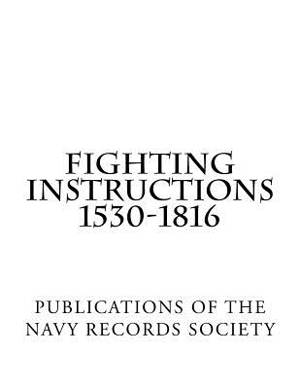
- Retrait gratuit dans votre magasin Club
- 7.000.000 titres dans notre catalogue
- Payer en toute sécurité
- Toujours un magasin près de chez vous
- Retrait gratuit dans votre magasin Club
- 7.000.0000 titres dans notre catalogue
- Payer en toute sécurité
- Toujours un magasin près de chez vous
22,45 €
+ 44 points
Description
Fighting Instructions 1530-1816. by Julian S. Corbett. Publications of the navy records society vol. XXIX. Royal Navy Fighting Instructions. The inaccessibility of the official Fighting Instructions from time to time issued to the fleet has long been a recognised stumbling-block to students of naval history. Only a few copies of them were generally known to exist; fewer still could readily be consulted by the public, and of these the best known had been wrongly dated. The discovery therefore of a number of seventeenth century Instructions amongst the Earl of Dartmouth's papers, which he had generously placed at the disposal of the Society, seemed to encourage an attempt to make something like a complete collection. The result, such as it is, is now offered to the Society. It is by no means exhaustive. Some sets of Instructions seem to be lost beyond recall; but, on the other hand, a good deal of hitherto barren ground has been filled, and it is hoped that the collection may be of some assistance for a fresh study of the principles which underlie the development of naval tactics. It is of course as documents in the history of tactics that the Fighting Instructions have the greatest practical value, and with this aspect of them in view I have done my best to illustrate their genesis, intention, and significance by extracts from contemporary authorities. Without such illustration the Instructions would be but barren food, neither nutritive nor easily digested. The embodiment of this illustrative matter has to some extent involved a departure from the ordinary form of the Society's publications. Instead of a general introduction, a series of introductory notes to each group of Instructions has been adopted, which it is feared will appear to bear an excessive proportion to the Instructions themselves. There seemed, however, no other means of dealing with the illustrative matter in a consecutive way. The extracts from admirals' despatches and contemporary treatises, and the remarks of officers and officials concerned with the preparation or the execution of the Instructions, were for the most part too fragmentary to be treated as separate documents, or too long or otherwise unsuitable for foot-notes. The only adequate way therefore was to embody them in Introductory Notes, and this it is hoped will be found to justify their bulk.
Spécifications
Parties prenantes
- Auteur(s) :
- Editeur:
Contenu
- Nombre de pages :
- 216
- Langue:
- Anglais
- Collection :
- Tome:
- n° 24
Caractéristiques
- EAN:
- 9781484007617
- Date de parution :
- 31-03-13
- Format:
- Livre broché
- Format numérique:
- Trade paperback (VS)
- Dimensions :
- 216 mm x 280 mm
- Poids :
- 512 g

Les avis
Nous publions uniquement les avis qui respectent les conditions requises. Consultez nos conditions pour les avis.






